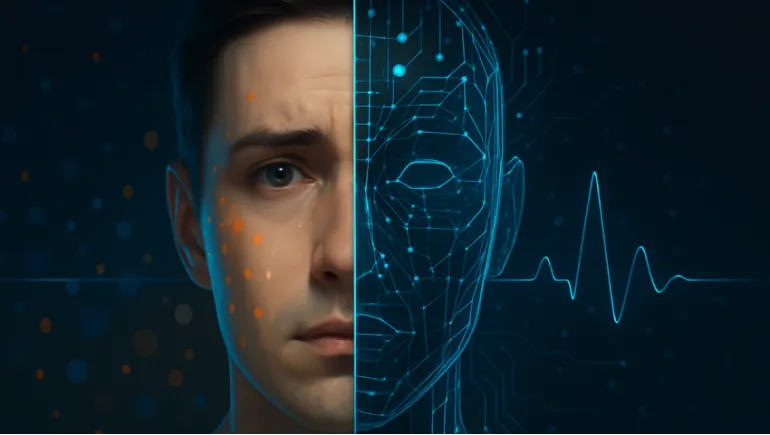
Artificial intelligence is moving faster than ever, and one of its most fascinating frontiers is emotional recognition. Until recently, spotting subtle feelings like joy, sadness, or sarcasm was seen as uniquely human. Now, with rapid advancements, AI may now match humans in spotting emotion, blurring the line between machine precision and human empathy. This AI revolution is pushing researchers, businesses, and even everyday users to rethink how we interact with technology.
AI emotion detection relies on analyzing facial expressions, tone of voice, body language, and even text-based cues. Using advanced neural networks, AI systems can pick up micro-expressions that humans often miss. Studies show that AI can identify emotional shifts in milliseconds, sometimes more consistently than humans, who may be influenced by bias or distraction. This raises the question: in the AI vs human debate, are we seeing machines become equal partners in understanding human emotions?
The ability for AI to match human emotion spotting isn’t just about research—it has practical, real-world applications. Imagine customer service bots that sense frustration and respond with empathy, or healthcare assistants that detect depression in a patient’s voice before it worsens. Education, marketing, and workplace communication all stand to benefit from emotionally aware AI. At the same time, the rise of this technology sparks discussions about ethics, privacy, and the danger of over-reliance on machines.
Humans bring empathy, intuition, and cultural context to emotional understanding. AI, on the other hand, offers speed, accuracy, and the ability to process massive amounts of data without fatigue. While humans may excel in interpreting complex emotions shaped by culture and experience, AI shines in consistency and objectivity. The reality is not a competition but collaboration—AI can augment human capability rather than replace it. Still, when AI matches humans in spotting emotion, the implications for industries and society are profound.
Every revolution comes with responsibility. Emotion recognition raises concerns about surveillance, manipulation, and data misuse. For example, could companies use AI to exploit consumer emotions, or could governments track dissent through emotional cues? Safeguards, transparency, and global regulations will be key to ensuring that this AI revolution respects human rights and values. Responsible use will determine whether emotion recognition becomes a tool for progress or a potential threat.
Each of these applications demonstrates how AI matching human emotion skills can reshape industries and everyday life.
The future of AI and human emotion recognition is not about replacement but enhancement. As AI continues to evolve, it could become a trusted assistant in understanding ourselves better. From mental health support to more empathetic digital communication, the possibilities are endless. Yet, the future will require careful balance, ensuring AI complements rather than dominates human interaction.
AI may now match humans in spotting emotion, and this milestone marks a turning point in the AI revolution. As we step into this new era, the challenge lies not in whether AI vs human wins, but in how both can work together. Machines may never fully grasp the depth of human experience, but their ability to assist, support, and amplify empathy is undeniable.
The path forward is clear: embrace AI as a partner, demand ethical standards, and use technology to create a world where emotions are not just understood, but respected.












Comments
There are no comments for this Article.